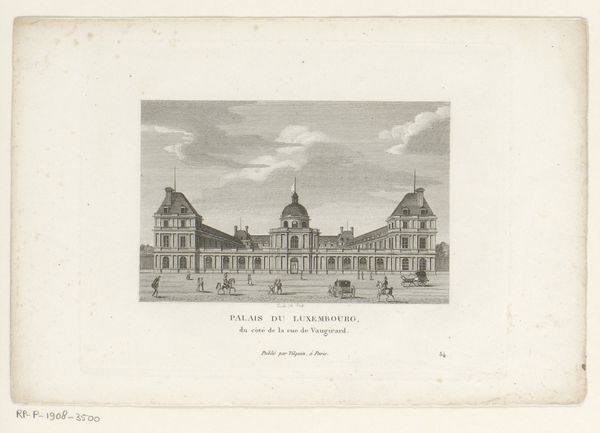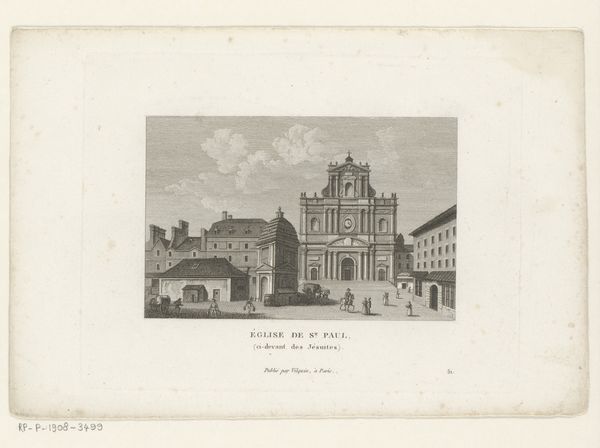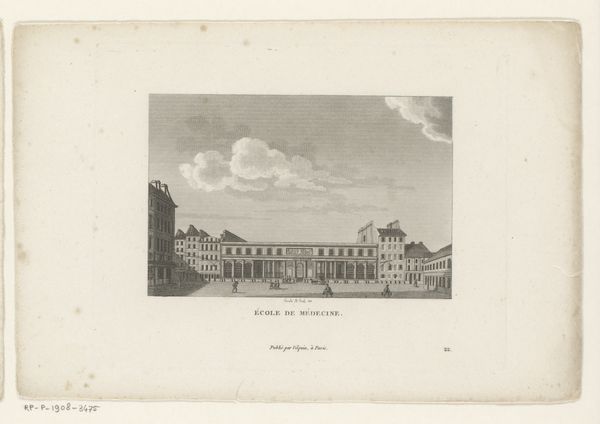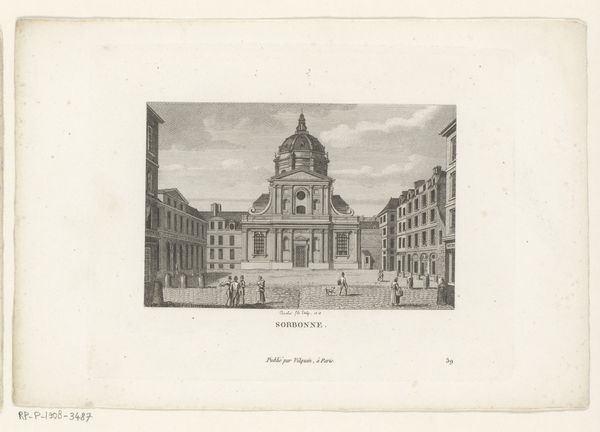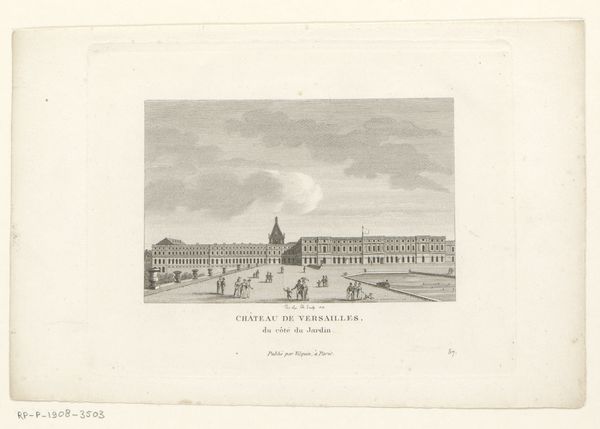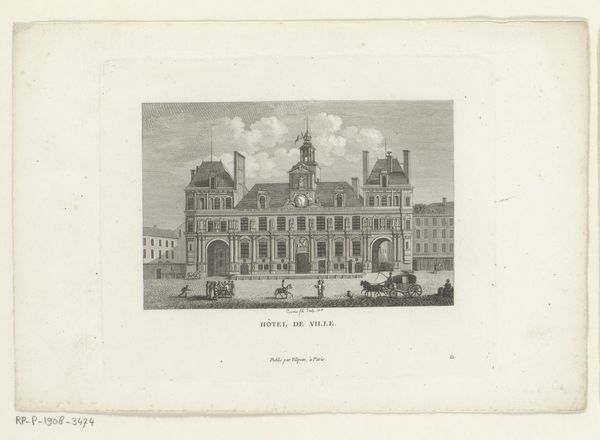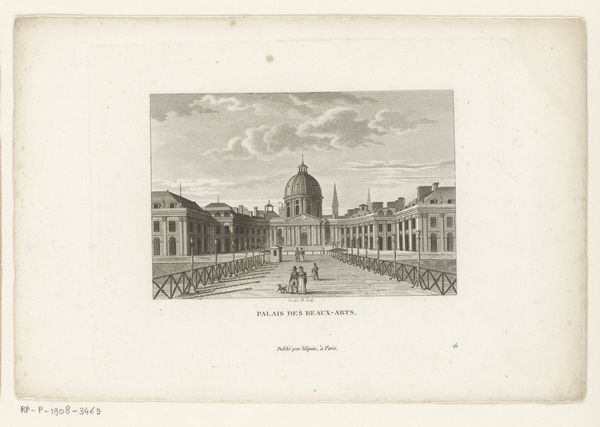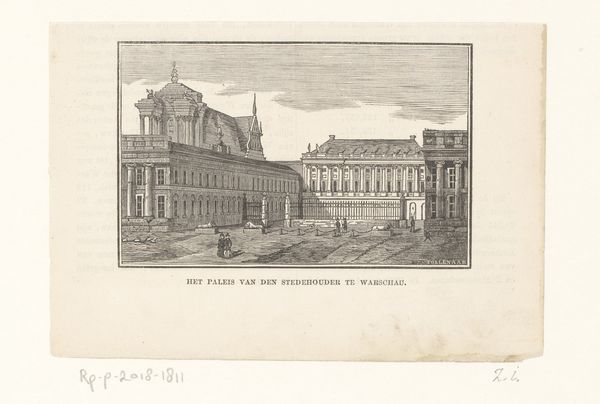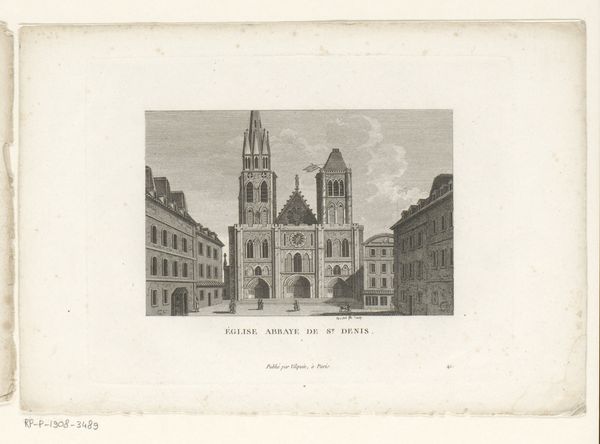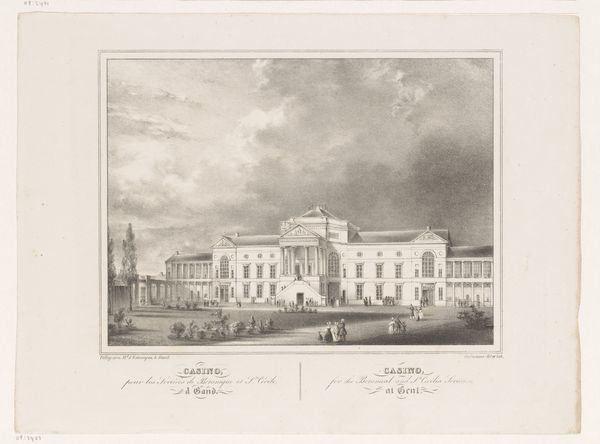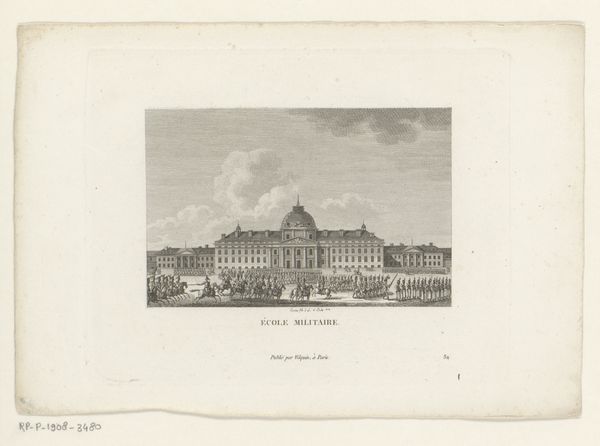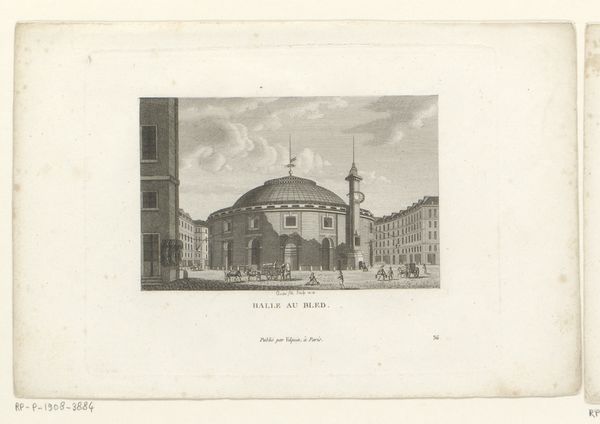
print, engraving, architecture
#
neoclacissism
# print
#
cityscape
#
history-painting
#
engraving
#
architecture
Dimensions: height 125 mm, width 158 mm
Copyright: Rijks Museum: Open Domain
Editor: This engraving, "Gezicht op het Paleis van Justitie te Parijs" by François Louis Couché, dating back to 1818, offers such a rigid and formal view of the Parisian courthouse. I'm curious how you interpret this piece? Curator: This isn't just a cityscape; it's a loaded depiction of power in post-revolutionary France. How might the choice to portray the Palais de Justice in such a rigid, almost sterile manner, reflect the political climate of the time? What does the architecture communicate? Editor: Well, I notice the architectural style is very Neoclassical which reminds me of the ideals of the Roman Republic and the period’s values around logic, order, and reason... Curator: Exactly! Neoclassicism was embraced to visually reinstate "order" after the turmoil of the revolution, projecting stability and legitimate authority. What do you notice about who, or what, is included—or excluded—from the frame? Editor: There are a few tiny figures but their purpose or individuality doesn't seem relevant at all. This may sound weird, but I guess this gives center stage to the authority and dominance of architecture over daily life... Curator: Precisely. Consider the history embedded in those stones. The Palais was not untouched by the revolution; it housed the Revolutionary Tribunal. Presenting it this way—cleansed, rationalized—works to suppress other potential readings. Editor: So, by focusing on the imposing facade, the artist might be downplaying more complex social or political realities associated with the site? Curator: Exactly. Consider this print a visual statement that deliberately reshapes public memory. It begs the question, how do institutions use aesthetics to legitimize themselves? Editor: I see it now. I had originally just considered the aesthetic; I had missed how actively this piece participates in crafting and controlling narratives around justice and authority! Curator: Absolutely. By examining art in its socio-political context, we can expose its role in power dynamics and social control.
Comments
No comments
Be the first to comment and join the conversation on the ultimate creative platform.
